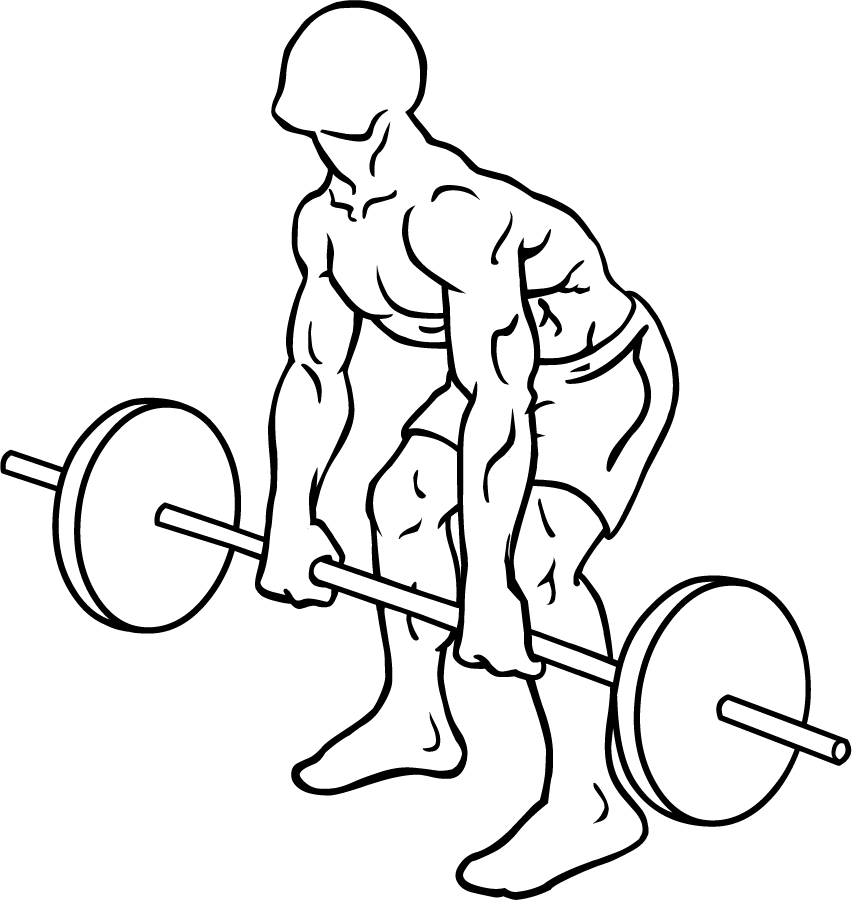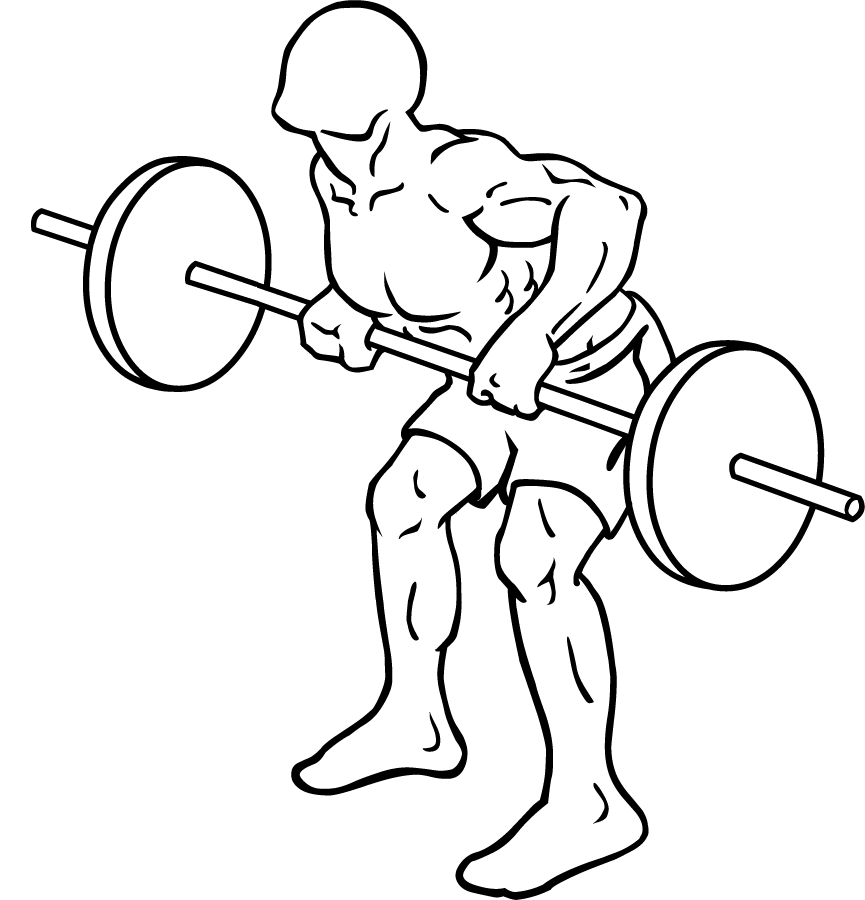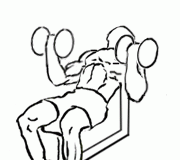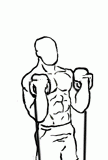Last Updated on September 30, 2022
The bent over row with barbell is a staple exercise in many strength training routines, renowned for its effectiveness in targeting the middle back. This exercise not only enhances back strength but also improves posture and contributes to overall upper body development. In this blog, we will delve into the details of performing the bent over row correctly, ensuring you reap the maximum benefits while minimizing the risk of injury. Whether you’re a seasoned lifter or a beginner looking to diversify your workout regimen, this guide will provide you with everything you need to know about the bent over row with a barbell.
Why the Bent Over Row is Essential
The bent over row is a compound exercise, meaning it engages multiple muscle groups simultaneously. Primarily, it targets the middle back muscles, including the latissimus dorsi, rhomboids, and trapezius. However, it also involves the biceps, shoulders, and core muscles, making it an excellent choice for building overall upper body strength and stability.
Benefits of Bent Over Rows:
- Improved Posture: By strengthening the muscles of the upper back, bent over rows help counteract the effects of prolonged sitting and slouching, promoting better posture.
- Enhanced Back Strength: Regularly performing this exercise can lead to significant improvements in back strength, which is crucial for daily activities and other athletic pursuits.
- Increased Muscle Mass: As a compound movement, bent over rows stimulate muscle growth across several areas of the upper body.
- Core Stability: Maintaining proper form during this exercise requires core engagement, which helps in developing a strong and stable core.
Preparing for the Bent Over Row
Before diving into the execution of the bent over row, it’s important to prepare adequately. This involves selecting the right equipment and ensuring you have enough space to perform the exercise safely.
Equipment Needed:
- Barbell: Choose a barbell that suits your strength level. Beginners may start with a lighter weight to focus on form before progressing to heavier loads.
- Weight Plates: Adjust the weight plates according to your fitness level. It’s better to start light and gradually increase as you become more comfortable with the movement.
- Flat Surface: Ensure you have enough space around you to perform the exercise without any obstructions.
Performing the Bent Over Row
Now that you’re prepared, let’s break down the steps involved in executing the bent over row with a barbell:
- Set Your Stance:
- Stand with your feet shoulder-width apart. This provides a stable base and helps maintain balance throughout the exercise.
- Assume the Bent Over Position:
- Bend at your hips while keeping your back flat and parallel to the floor. Your knees should be slightly bent to avoid placing undue stress on your lower back.
- Grip the Barbell:
- Grasp the barbell with an overhand grip (palms facing down), positioning your hands slightly wider than shoulder-width apart.
- Establish Starting Position:
- Hold the bar at arm’s length in front of you. This is your starting position.
- Execute the Row:
- Slowly pull the barbell towards your lower chest. Focus on squeezing your shoulder blades together as you lift.
- Keep your elbows close to your body throughout the movement.
- Pause and Return:
- Pause briefly at the top of the movement when the bar reaches your chest.
- Gradually lower the bar back to the starting position in a controlled manner.
Key Tips for Proper Form
Maintaining proper form during bent over rows is crucial for maximizing effectiveness and preventing injury:
- Keep Your Head Up: Avoid looking down during the exercise; instead, keep your gaze forward or slightly upward to maintain neck alignment.
- Maintain a Straight Back: A rounded back can lead to injury. Focus on keeping your spine neutral and engage your core for support.
- Control Your Movement: Avoid using momentum to lift the bar; instead, use controlled movements to engage your muscles effectively.
- Breathe Properly: Inhale as you lower the bar and exhale as you lift it towards your chest.
Common Mistakes to Avoid
Even experienced lifters can fall into bad habits when performing bent over rows. Here are some common mistakes to watch out for:
- Using Too Much Weight: Lifting too heavy can compromise form and increase injury risk. Prioritize technique over weight.
- Rounding Your Back: A rounded back places strain on your spine; always keep it flat and aligned.
- Jerking Movements: Avoid jerky or rapid movements; they reduce muscle engagement and increase injury risk.
- Neglecting Core Engagement: A strong core supports proper posture and form during this exercise.
Variations of Bent Over Rows
Once you’ve mastered the traditional bent over row, consider incorporating variations into your routine for added challenge and muscle engagement:
- Underhand Grip Row: Switch to an underhand grip (palms facing up) to target different areas of your back and biceps more intensely.
- Single-Arm Dumbbell Row: Use dumbbells instead of a barbell for unilateral training, which can help correct muscle imbalances.
- T-Bar Row: Use a T-bar attachment for a different angle of resistance that emphasizes lower lats.
Integrating Bent Over Rows into Your Routine
The bent over row can be incorporated into various workout routines depending on your fitness goals:
- Strength Training Program: Include it as part of an upper body or full-body workout routine.
- Back-Focused Workout: Pair it with other back exercises like pull-ups or lat pulldowns for comprehensive back development.
- Circuit Training: Use it in circuit workouts for added intensity and cardiovascular benefits.
The bent over row with a barbell is an essential exercise for anyone looking to build strength, improve posture, and enhance their overall fitness level. By following proper technique and avoiding common mistakes, you can safely incorporate this powerful movement into your workout routine. Remember that consistency is key—regular practice will lead to noticeable improvements in strength and muscle definition over time. Whether you’re lifting at home or in a gym setting, mastering this exercise will undoubtedly contribute positively to your fitness journey.








